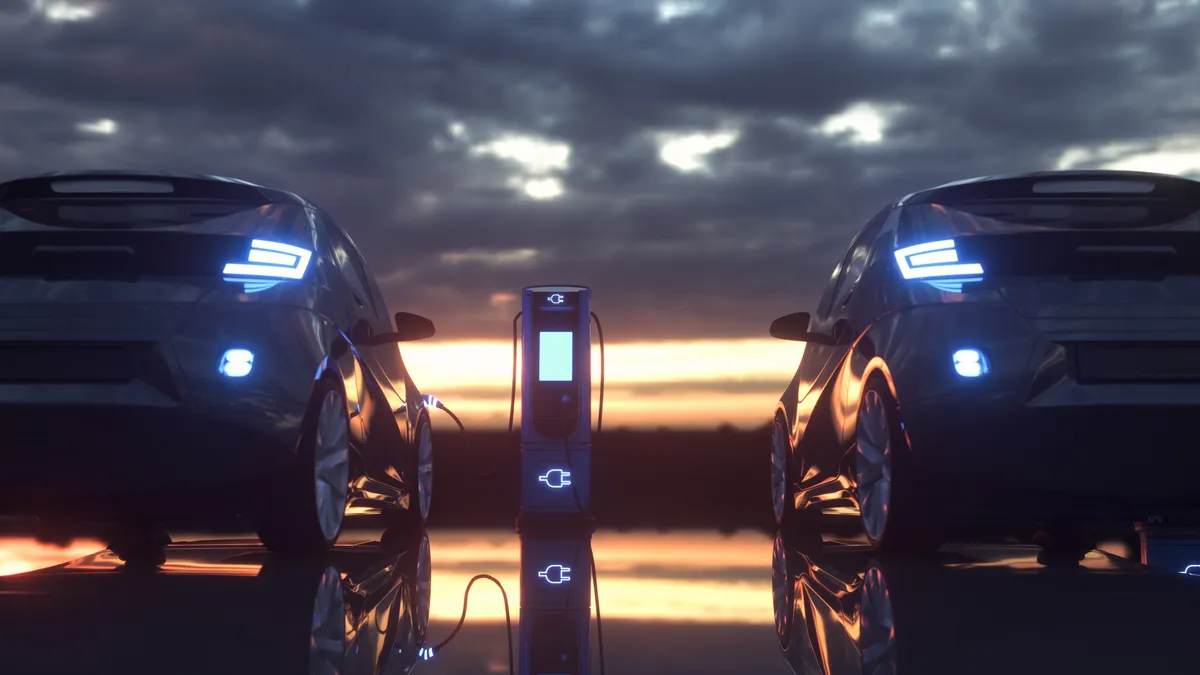The U.S. has known for roughly two decades that it would eventually face a shortage of skilled electricians. Unfortunately, the shortage is hitting just as the National Electric Vehicle Investment (NEVI) program kickstarts the deployment of tens of thousands of electric vehicle (EV) chargers nationwide. As a result, the industry will have to find innovative ways to minimize the labor required by electricians and optimize the use of their time.
The need for electricians in the U.S. is projected to grow seven percent from 2021 to 2031, according to the U.S. Bureau of Labor Statistics. That’s equivalent to 79,900 openings for electricians each year, on average, over the next decade. Three factors are driving a projected shortage: the rapid retirement of skilled electricians; a lack of young electricians entering the field; and the increasing electrification of modern life.
Electrification of transportation is one of the new demands for skilled electrical work. In fact, NEVI requires electricians to have additional EV industry training, further reducing the pool of people available to perform installations. “NEVI guidelines require any technicians installing, maintaining, or operating EV charger infrastructure to have appropriate licenses, certifications, and training,” said Mark Seitz, a manager of the EV charging business unit of Franklin Electric. Electricians must have a certification from the Electric Vehicle Infrastructure Training Program (EVITP) or have graduated from a registered apprenticeship program that includes specific training on EV supply equipment.
How Will This Affect NEVI Charger Installations?
The requirements for a NEVI-funded EV charging station call for a minimum of four direct current (DC) fast chargers. These can be acquired and installed by construction contractors. However, the field wiring and the switchgear connecting power to the charging station from the utility’s distribution transformer requires installation by an electrician.
“Installing, wiring, and connecting the pieces of a traditional post-and-frame switchgear takes about 50 hours of on-site electrical labor,” Seitz said. “And that doesn’t take into consideration the time, costs, and difficulty of sourcing components from various manufacturers and supply houses.” Traditional switchgear is composed of electrical panels that are tasked with receiving, distributing, and protecting the site’s power. The components include a power disconnect panel, a current transformer (CT) cabinet, utility meter, distribution panels, and a transformer.
“Just measuring, cutting and assembling the typical post-and-frame structure for these panels takes two days,” Seitz said. “That’s before the electrician even begins handling the electrical components.” Next steps include:
- Removing all dead fronts from tubs panels
- Mounting the panels, cabinets and enclosures
- Removing all the conduit knockouts
- Installing conduit fittings and conduit
- Mounting all breakers and internal equipment to bus bars
- Running wire through conduit
- Terminating all wires
- Making the external field wiring conduit connections
The first round of NEVI funding, which will be distributed to states in the next few months, aims to catalyze the installation of charging stations covering 75,000 miles of highway. But contracting, scheduling and executing the necessary amount of on-site electrical work under labor constraints could be a significant roadblock.
What Can Be Done About It?
Performing the labor-intensive assembly of switchgear off-site in a manufacturing setting is one potential solution. Franklin Electric designed a modular, NEVI-ready switchgear that can be installed by construction contractors and only requires a quick on-site connection by a certified electrician. “An electrician can show up and make the on-site power connections in about an hour,” Seitz said.
Franklin Electric is assembling the NexPhase Smart EV Switchgear to be an integrated, turn-key solution that minimizes the complexity and effort required to install switchgear. The modular unit combines transformers, circuit breakers and controls in a single cabinet. All internal components are pre-installed and pre-wired. The cabinet only requires the on-site connections for the incoming power and outgoing charger connections, drastically reducing on-site installation time and labor.
In addition, the unit includes its own monitoring and control systems that will allow operators to perform trouble shooting and other management operations remotely. “Simply being able to reboot chargers remotely with a power-cycle is a huge advantage to station operators who are going to have to prove that they’re meeting NEVI’s uptime requirements,” Seitz said.
Electricians built switchgear on site in the past, because the demand was lower and the supply of labor was relatively high and cost-effective. That situation is changing rapidly, and Franklin Electric has committed to bringing assembly-line benefits and scale to the equation. Time will tell if states are able to overcome the shortage of labor and other challenges that may delay the rapid deployment of and EV charging infrastructure in the U.S.










